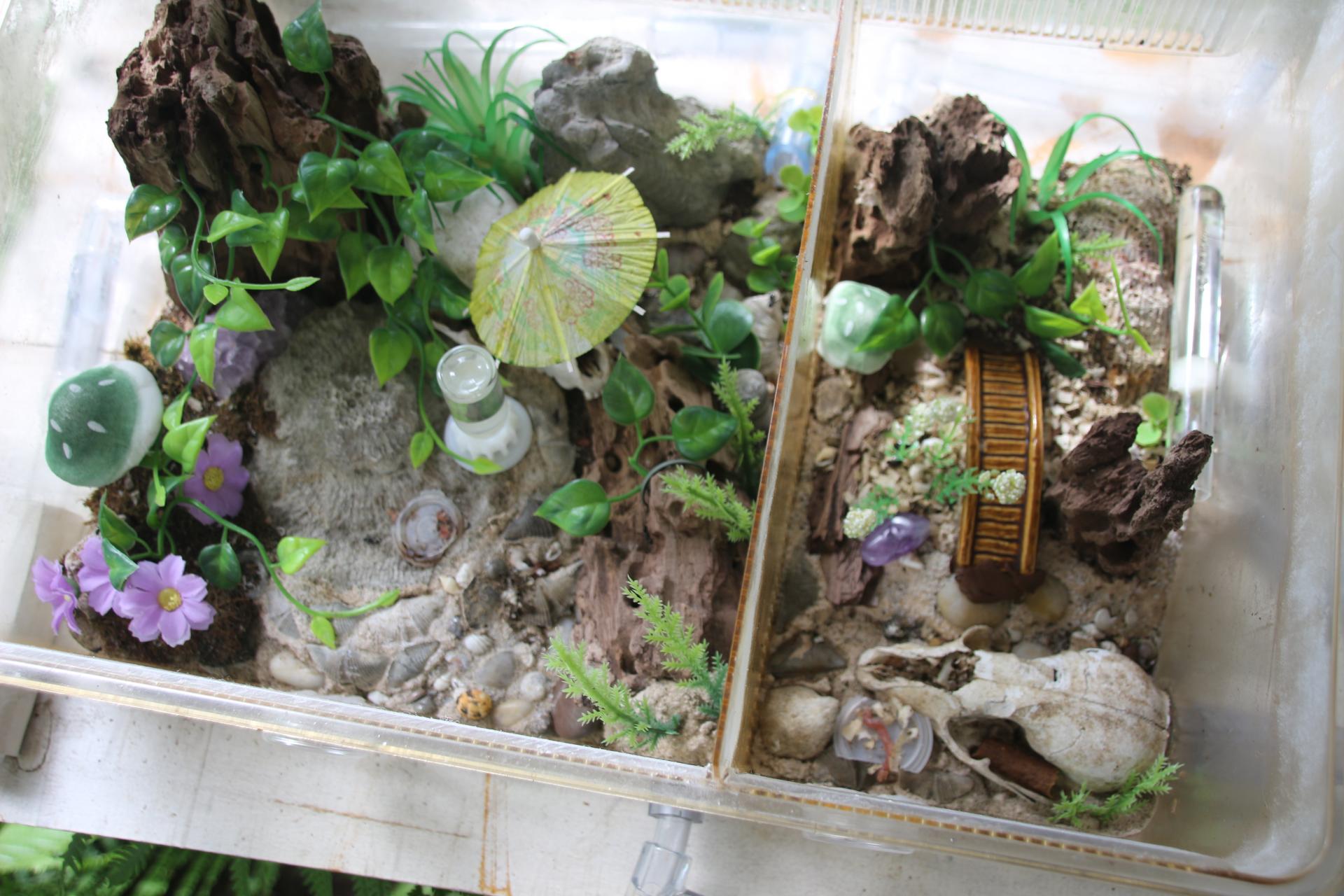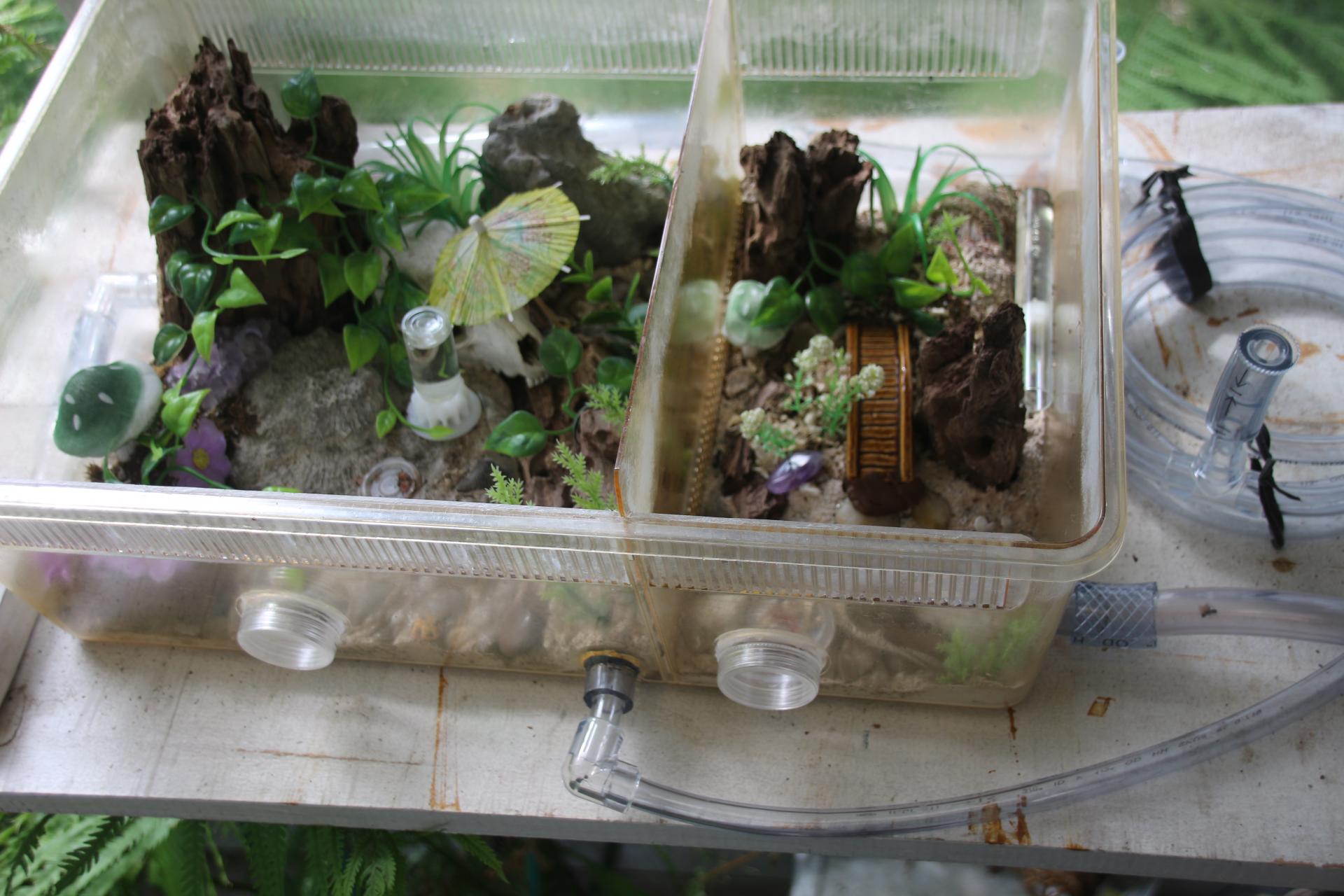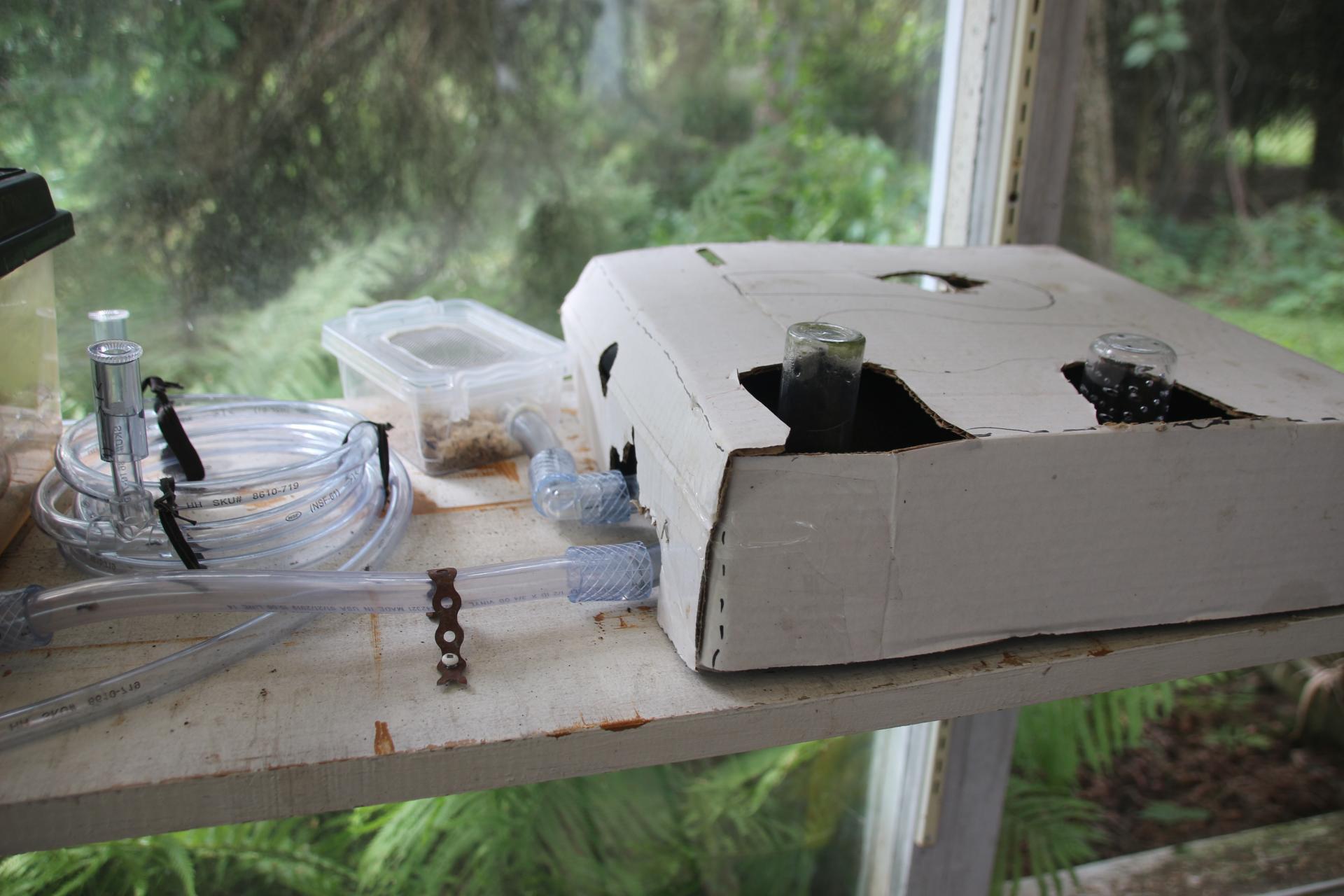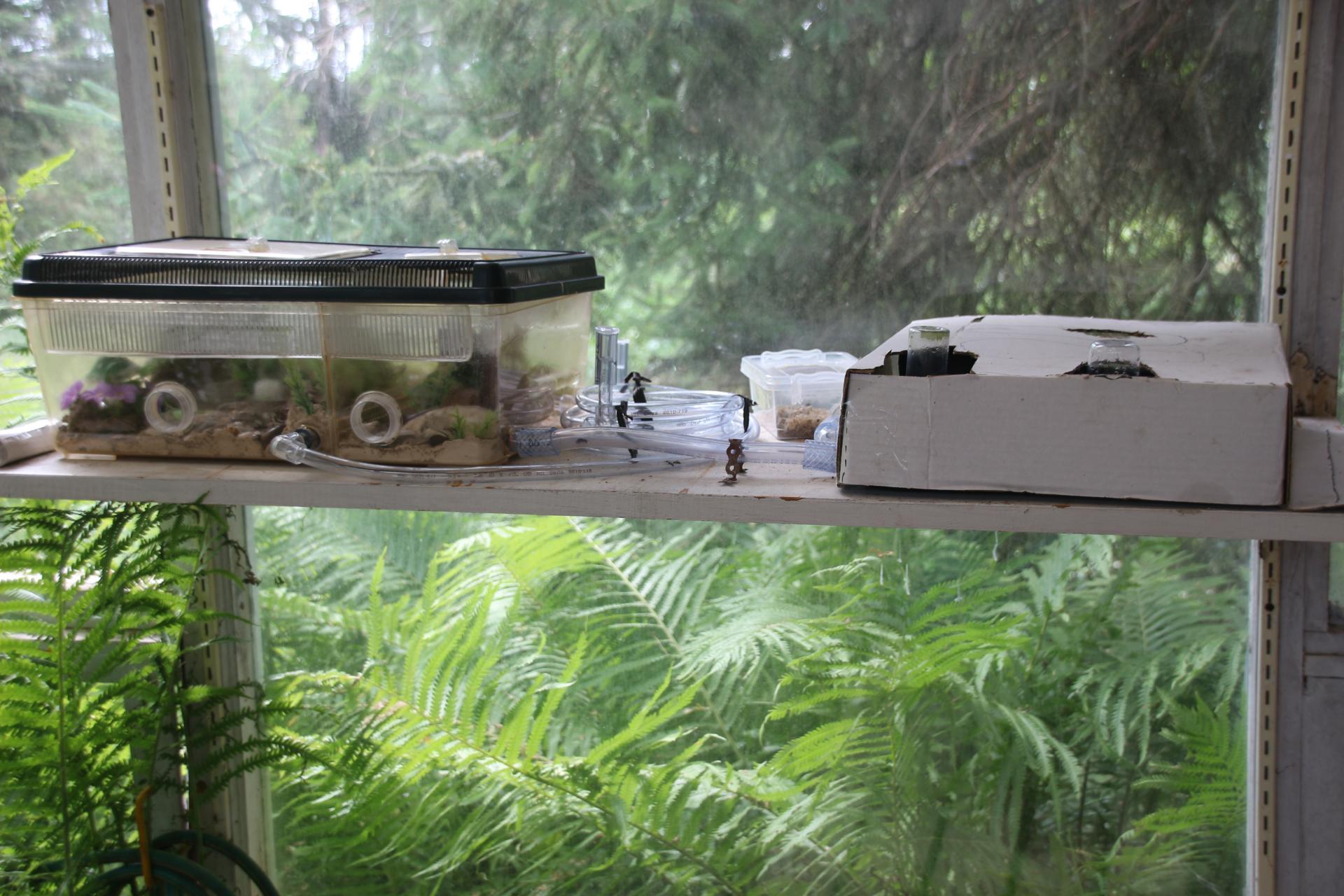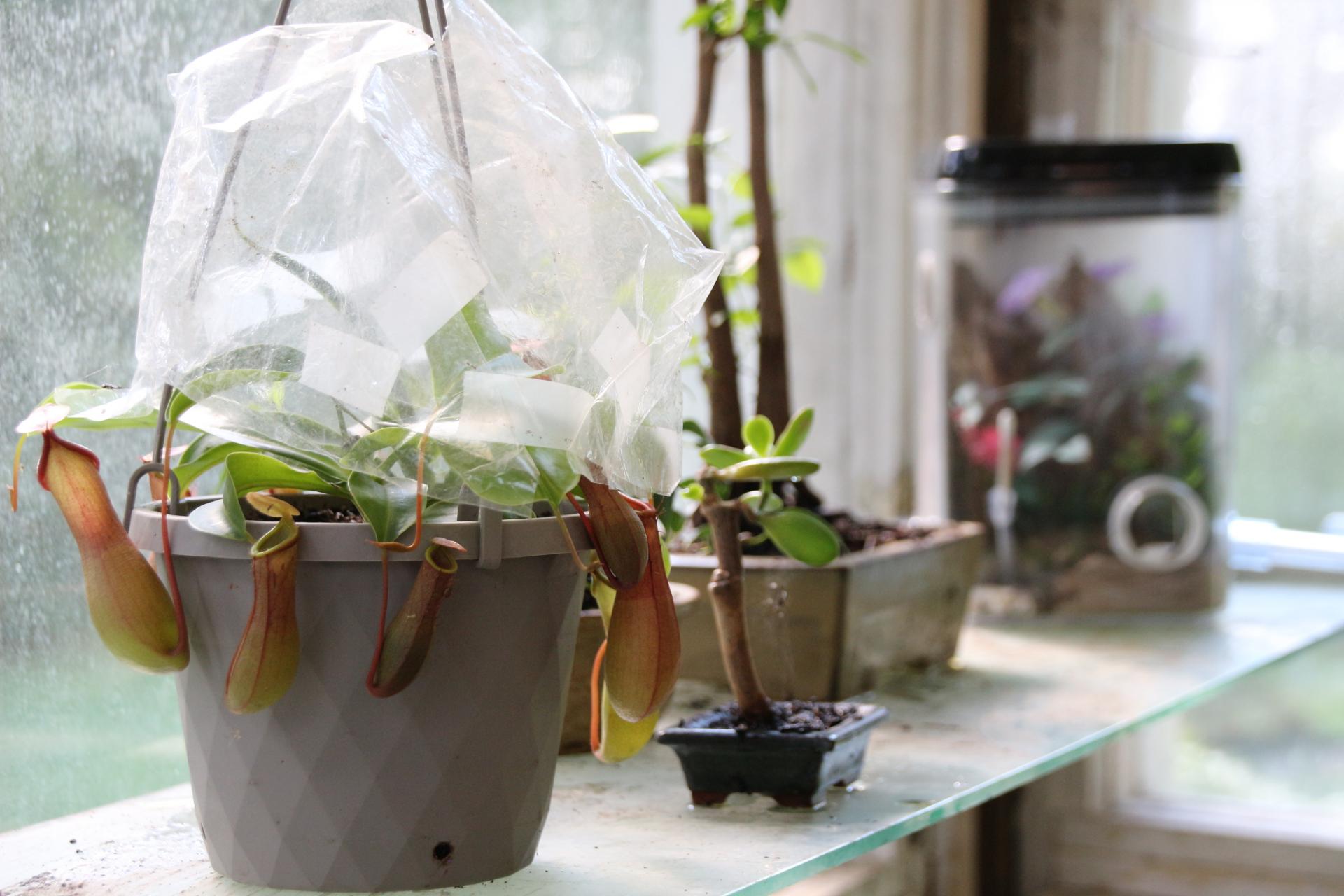I'm most pleased with my antkeeping abilities when I can induce natural behavior. To me, that's ants living in their formicarium and foraging in their outworld. When colonies grow too large, or conditions aren't ideal colonies end up "hanging out" in the outworld, kind of like they live in a nest where the outworld is just a big living room with food on the floor. Not ideal.
I've discovered that what keeps ants seeing the outworld as a distinct space varies by species. But some things are a little universal. Cleaning the outworld helps since I think that makes it less familiar. In theory there would be other ants, and creatures passing by, it's not a safe place to just fall asleep. It's not a place for brood. Sufficient nest space is important, but so is having nest space that meet the species particular needs. Another key factor is light.
Camponotus pennsylvanicus (and probably other large wood-dwelling carpenter species from temperate zones) The biggest thing I've learned about these ants is they are sensitive to light and do not need a moist nest at all. Maybe for early founding, but they thrive in wood without any moisture. But keep their nest uncovered and they will find a shadowy spot in the outworld instead. Larger colonies need to have multiple nest locations and probably multiple outworlds. Cork bark is a great way to create a nice hiding location for ants that like to stay in the outworld so they aren't just standing around. Multiple outworlds give you more options for cleaning. I rinse their sand from time to time. And change hardscape. I want to try some moss with them but I'm nervous about them trying to nest in it... thoughts? These ants like a little heat, but they also NEED to be cold for part of the winter and there should be some months when they have no brood and do little but sleep. I'm thrilled with how their outworld has come along.
Dorymyrmex bureni These tiny little ants are also sensitive to light... but in the opposite way as the carpenters. They like to be out when the lights are on and become more active when it's warm and sunshiny. They are not as picky about their nest being dark and it's shocking how tiny their nest is for the size of the colony. A big outworld will allow you to watch them make trails and do recruiting. I'm testing to see if they will use a second nest but I think they like to keep everyone in one place and the brood in one big pile. I would like to give them changes to do more digging and sand sculpting. Has anyone had any luck with them in a "glass sandwich" nest? They need to have a hydrated nest since they are small and can dry out. These ants love heat. Their outworld looks great.
Camponotus discolor (smaller more warm weather carpenters) I'm having some trouble with these ants. They don't seem to like any nest. They have filled a wood nest and a cork nest and show no real preference. I get the sense they like it a little more damp. But they are packed into the wooden nest, but also linger over their two outworlds. I have discovered they are heat fiends so maybe I can use that to get them inside more. Does anyone have a good looking tidy outworld with this species? My outworld is a mess. I don't think they like sand or rocks and if I put cork they don't use it as a hide they just loiter.






